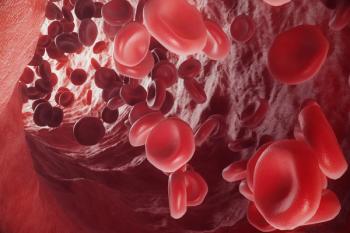
- Oncology Vol 30 No 4_Suppl_1
- Volume 30
- Issue 4_Suppl_1
(S017) A Margin Reduction Study for the Treatment of Gastric Marginal Zone Lymphoma Utilizing a Magnetic Resonance Imaging–Guided Radiation Therapy (MRIgRT) System
Significant variability in clinical target volume localization of gastric marginal zone lymphoma occurs if daily RT is delivered based on alignment to bony anatomy. MRI-guided RT allows for significant reduction in planning target volumes expansions without compromising coverage.
Anupama Chundury, MD, Benjamin W. Fischer-Valuck, MD, Linnae Campbell, MS, Olga Green, PhD, Harold Li, PhD, Sasa Mutic, PhD, Maria Thomas, MD, PhD, Jiayi Huang, MD; Washington University School of Medicine
BACKGROUND: Radiation therapy (RT) is one of the major treatment modalities for localized gastric marginal zone lymphoma (GMZL). The purpose of this study was to correlate daily clinical target volumes (dCTVs) with planning target volumes (PTVs) in patients undergoing definitive RT for GMZL, utilizing a novel on-board magnetic resonance imaging– guided radiation therapy (MRIgRT) system.
METHODS: Five patients with GMZL were treated with definitive RT using MRIgRT to a dose of 30 Gy in 20 fractions. Preceding RT, patients underwent treatment planning CT and MR simulations to delineate the CTV (entire stomach). Prior to delivery of each fraction, a daily pretreatment MRI (dMRI) was acquired for target localization. These dMRIs were manually registered to planning MRIs (pMRIs) based both on bony anatomy and then on planning CTVs (pCTVs). Retrospectively, pCTVs were recontoured and expanded by 5, 10, and 20 mm to generate new PTVs, which were then compared with recontoured pretreatment dCTVs to assess target overlap.
RESULTS: One hundred dMRIs were evaluated. Ninety-nine of 100 dCTVs had a smaller volume than the pCTVs; a 3-mm expansion of one pCTV was required to include the outlier dCTV. When dMRIs were registered to the pMRI based on bony anatomy, all dCTVs were outside a 5-mm expanded PTV, 92 were outside a 10-mm expanded PTV, and 50 were outside a 20-mm expanded PTV. No patients had all 20 dCTVs fully encompassed by a 20-mm expanded PTV. When dMRIs were registered to the pMRI based on CTVs, all dCTVs were fully encompassed within a 5-mm expanded PTV.
CONCLUSIONS: Significant variability in CTV localization of GMZL occurs if daily RT is delivered based on alignment to bony anatomy. MRIgRT, which provides improved localization of dCTVs, allows for significant reduction in PTV expansions without compromising coverage. A 5-mm PTV margin appears sufficient for MRIgRT.
Proceedings of the 98th Annual Meeting of the American Radium Society -
Articles in this issue
Newsletter
Stay up to date on recent advances in the multidisciplinary approach to cancer.
















































































